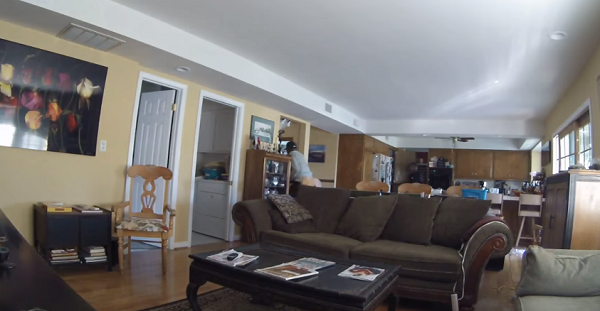
Rumor has it that the prominent analog video cameras of 1980’s glory affixed to various turrets and prominent features on the mansions of the wealthy and elite, actually ignited the spark of excitement and danger within the criminal mindset.
Rather than acting as a deterrent to the legions of thieves, these now archaic hardware monstrosities prompted a steady stream of well orchestrated burglaries, despite the personal knowledge in the crook’s mind, that a possible recording of the pending incident was recorded onto a VHS or Beta tape and the low quality video could be used as possible evidence in a courtroom or for the purpose of identification. Suffice to say, in the history of the world the presence of video surveillance recording equipment has never prevented a motivated burglar from committing unthinkable acts to a victim’s possessions.
Move ahead nearly three decades, and the innovative minds in the Amazon universe have conjured up a brilliant scheme to supposedly enhance the efficiency of smart residential security interacting with the increased frequency of home deliveries (presumably as a result of the explosion in the number of online shopping sprees from the digital pages of the online retail giant). The process is simple, eloquent and wildly flawed, in leaving the homeowner or resident vulnerable to even the most vapid of criminal minds. The BBC reports that Amazon plans to up the ante of the guaranteed delivery of packages, by allowing couriers direct access into the residence if no one is home, with a system completely reliant on the precarious combination of trust and technology. Hmmm, what could possibly go wrong here?
On paper or in a vacuum, the concept seems viable, and eliminates the possibility of the package being heisted from the doorstep or the front porch. Hypothetically, users of Amazon smart home products can purchase a smart lock and cloud based camera, which will allow delivery professionals to simply scan the appropriate package and utilize an app to gain entrance at the destination. Once the scan of the barcode has taken place, apparently the home camera is activated and presumably the subsequent events are permanently etched into the cloud. Users have the option of watching the delivery live or can access the content at a later time. Realistically, the electronic infrastructure of the system combined with allowing a stranger unsupervised entrance into the home is a a potent recipe for disaster, combined with the haunting and diabolical idea that Amazon is completely monopolizing the liability in the guaranteed delivery of its own parcels. Have various auditors and discerning individuals examined the plausible insurance scandal on packages that are go “missing” or are “stolen”. As the company makes the majority of its revenue off of shipping costs, this is a viable qualm.
The universal axiom holds true for any engineered system, “Regardless of the tedious planning and redundancy in preventing accidents, even the most well designed and engineered infrastructure is vulnerable to deliberate and malicious acts.” While an old fashioned lock and key, may seem passe to the younger generations, breaking into a home without causing a ruckus, takes a fair amount of luck and skill. With the behemoth of shipping attempting to corner the smart home market and adding more complex and moving parts to a historically straightforward process, syndicates of crime are licking their proverbial chops to feast on the pending mountains of treasure easily accessible through base coercion techniques towards couriers or hacking the electronic lock and key. Maybe, the progressive mindset of millennials and utter disdain for privacy, spawns a society of complete open door policy and a quasi-socialism economic system based on the sharing (stealing) of neighborly goods. For the elder generations, we will simply grab a buttery bucket of popcorn and watch a fire bucket brigade of merry thieves liquidate the house on the corner and led by a smiling Amazon delivery professional.
Read the BBC article here.